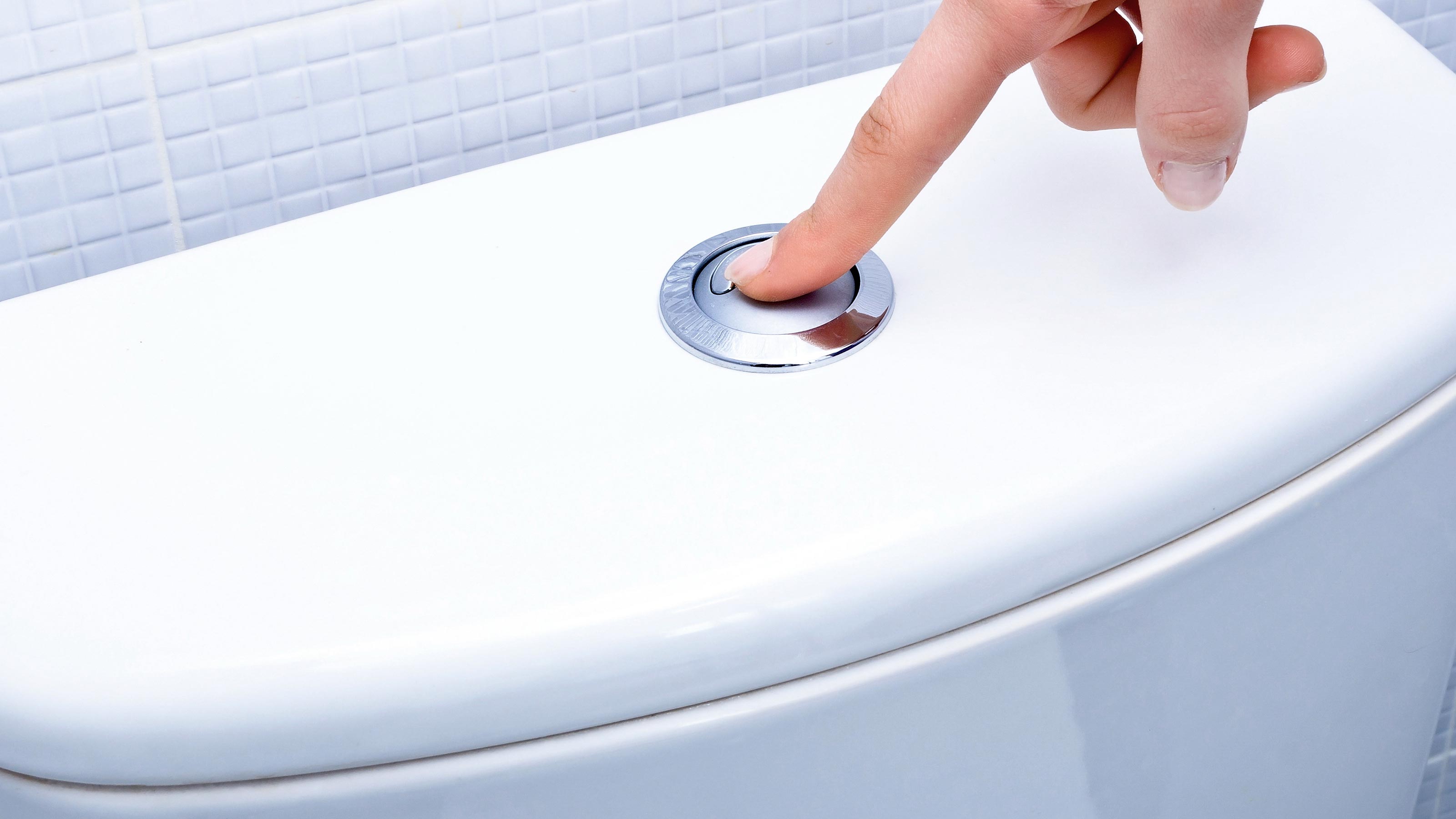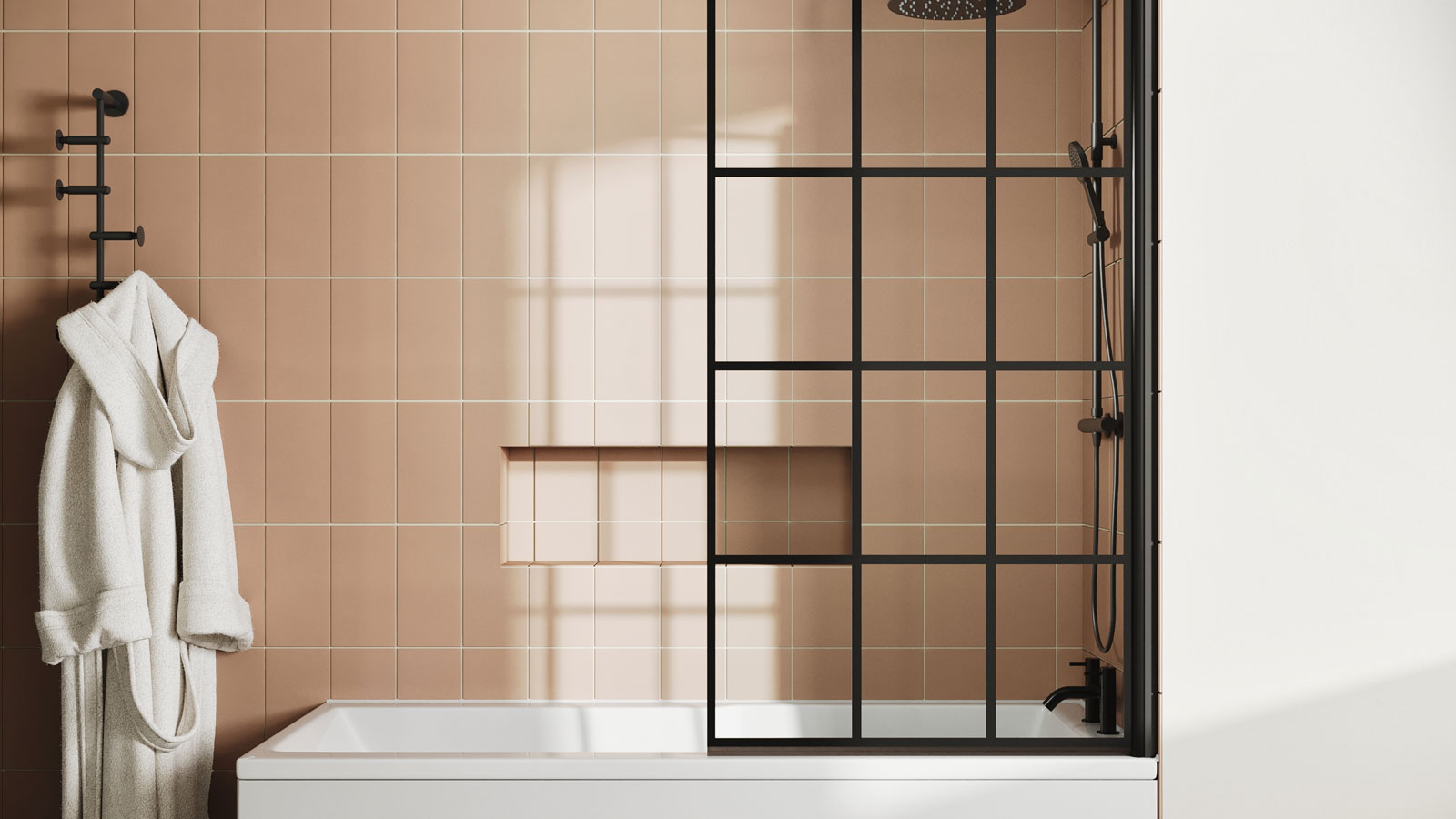How to fix a running toilet with a button flush: A DIY guide
We show you how to fix a running toilet with a button flush, plus common causes of toilet leaks and how to deal with them

Knowing how to fix a running toilet with a button flush is a skill any DIYer should have in their arsenal. It means you can quickly sort out any issues, get your toilet working properly and not have to splash out on the expense of calling out a plumber.
Typically a running toilet is easy to fix, but it may involve purchasing new parts increasing the price of the job. But, if you are thinking about renovating your bathroom in the near future, you might be better off putting the cost of the parts towards a new toilet.
Here we take a look at common causes of a running toilet, how to fix it and reveal how much a plumber will charge.
What are the causes of a running toilet?
One of the most common causes for a constantly running toilet is a leak in the bottom of the flush valve. This lifts up when you press the flush button to allow the water in the cistern to run into the toilet bowl.
The bottom of the flush valve has a rubber washer that can become worn over time, meaning it is not sealing properly and letting water through. Alternatively, it might be that limescale has built up around the valve and fallen into the bottom of the valve, preventing it from sealing properly.
Another reason could be that limescale has built up around the inside of the valve so that it sticks when you release the flush button and doesn't close properly.
Start by getting access to the toilet flush valve
Before you can attempt to fix your running toilet you will need to get access to the flush by removing the lid of the water tank.
Most button flushes are screwed in, so you simply need to unscrew to remove. Use two fingers, press down on the outsides of the button and turn anti-clockwise until the button can be removed. Now lift off the lid to access the flush.
Some dual button flushes are held in by a screw underneath the buttons. Get a small screwdriver and gently ease out the button. Now undo the screw holding the unit in place.
Bring your dream home to life with expert advice, how to guides and design inspiration. Sign up for our newsletter and get two free tickets to a Homebuilding & Renovating Show near you.
How to fix a running toilet with a button flush
Once you have the cistern lid off, place the flush button and lid out of the way before you start. You don’t want to step back and break either
1. Switch off the water supply
Start by locating the water supply pipe to the cistern. These are attached to the bottom or the side of the cistern. The pipe will typically have an isolation valve or a handle so that you can stop the flow of water.
If it has a handle simply turn clockwise 90 degrees. If it's an isolation valve, get a flathead screwdriver and turn 90 degrees so that the notch is horizontal.
If there is no stop option for the water supply pipe — this is sometimes the case in older houses — then you will need to switch off the main water supply.
2. Flush and remove valve
Now flush the toilet to empty the cistern. Once the cistern is empty, remove the central flush valve or syphon as it is also known. This is the unit connected to the flush button. You can typically remove this by twisting the valve clockwise. It may be difficult to remove if there is a build up of scale, so be gentle but firm.
3. Check and replace seal
The bottom of the flush valve sits in a holder. Check any limescale hasn’t fallen into it as this can affect the seal. It needs to be free from any debris that may affect the washer closing properly and causing a leak.
Now check the rubber washer on the bottom of the valve. Make sure that it is clean and free from limescale and debris. If it is, check the state of the rubber seal. It may need replacing. If it does, take along to your local plumber merchant or measure up and look online and get a new one.
Will I need to replace the button flush?
This depends very much on where the problem lies. If the button is the source of the problem then you will need to replace it. These cost around £5-10 to buy and are easy to fit yourself.
However, if the problem lies elsewhere i.e. the flush valve — this is the part that the button connects to — then you will need to repalce the whole unit. This typically comes with the button included. If the price of the fix is going to cost nearly as much as a new toilet then it might be a good time to fit a new toilet.
How much will a plumber charge to fix a running toilet?
There are a number of factors when it comes to the cost of fixing a running toilet. It will depend on what is causing the issue. If a part needs replacing the cost will obviously be more. For example a dual flush valve will cost anywhere from £20-70.
Parts aside you can expect to pay around £40-60 an hour for small jobs such as fixing a button flush or fitting a toilet seat, and this typically includes the call out charge. If the job it's going to take longer than a couple of hours you can expect to pay around £300 for a day, plus parts.
Steve Jenkins is a freelance content creator with over two decades of experience working in digital and print and was previously the DIY content editor for Homebuilding & Renovating.
He is a keen DIYer with over 20 years of experience in transforming and renovating the many homes he has lived in. He specialises in painting and decorating, but has a wide range of skills gleaned from working in the building trade for around 10 years and spending time at night school learning how to plaster and plumb.
He has fitted kitchens, tiled bathrooms and kitchens, laid many floors, built partition walls, plastered walls, plumbed in bathrooms, worked on loft conversions and much more. And when he's not sure how to tackle a DIY project he has a wide network of friends – including plumbers, gas engineers, tilers, carpenters, painters and decorators, electricians and builders – in the trade to call upon.

